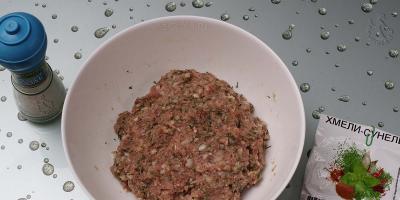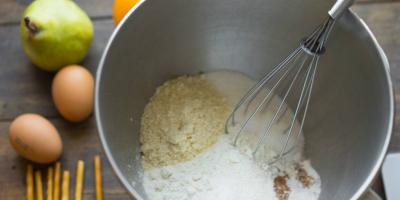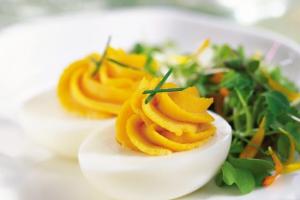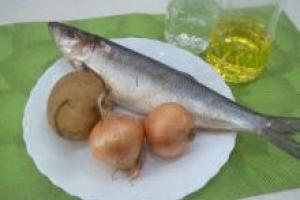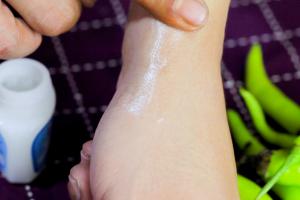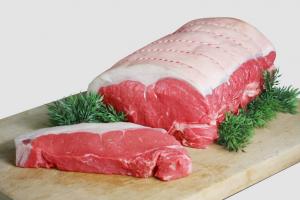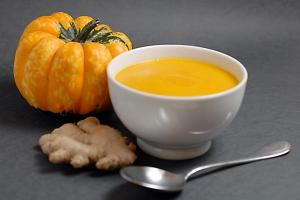Noodles- variety pasta. It is typical for Asian cuisine, which is now very popular. Interestingly, Chinese noodles are considered the oldest in the world. It was prepared back in the 2nd millennium BC. e.
Types of noodles
This product consists of long narrow strips of dough, which is made from rice or wheat flour and kneaded in water. Egg noodles have a different composition, which includes eggs or egg powder. Each type of product has its own characteristics. Let's try to figure out how noodles differ from regular pasta and which type is the healthiest.
Egg
Asian noodles are not similar to other pasta products even in appearance. Its miniature size immediately catches your eye: these are flat strips 1 mm wide. The recipe includes the simplest ingredients - water, eggs or egg powder, salt. Flour (usually wheat) is also added to balance the taste and increase nutritional value. If yolks are used for production, the color of the product becomes rich yellow, if only the whites - grayish or translucent.
Egg noodles are considered the tastiest and healthiest when they are prepared without the use of liquid. Its nutritional value is as follows (per 100 g of dry product):
- calorie content – 304 Kcal;
- proteins – 14.16 g;
- fats – 4.44 g;
- carbohydrates – 67.97 g;
- cholesterol – 84 mg;
- ash – 1.12 g;
- water – 9.01 g.
The product is rich in vitamins D, A, group B and nicotinic acid, and it also has a good nutrient composition: potassium, magnesium, phosphorus, iron, zinc.
Natural egg noodles fit perfectly into the concept of a healthy diet. It’s not for nothing that it’s highly valued in kitchens. different countries, because in moderate quantities it really benefits the body:
- normalizes the functioning of the gastrointestinal tract;
- regulates blood sugar and cholesterol levels;
- saturates the body with vitamins, micro- and macroelements, as well as easily digestible proteins;
- provides a feeling of fullness for several hours, charging you with energy and strength for work.
If premium flour, starch, thickeners, preservatives, and flavor enhancers were used for cooking, this is already gastronomic garbage - perhaps tasty, but such a product cannot be called healthy. To be sure of the benefits and quality of noodles, you can prepare them at home. Spices will help add additional flavor notes and will also replace table salt. The dish goes well with vegetables, fish and meat side dishes. Such food will provide high-quality satiety until the next meal.
Wheat
This is one of the most popular types of pasta. Everyone knows the taste of wheat noodles, and the production technology and recipe do not require high costs. The undisputed leader in product consumption is Japan. In this country wheat noodles people have been eating it every day for centuries. It is included in most traditional Asian dishes in combination with various sauces and additives.
There are 2 main varieties of the product - ramen and udon, which was originally prepared by the Chinese, but later it moved into Japanese cuisine. A distinctive feature of the product is the absence of eggs in its composition. Udon is also considered the thickest noodle, its diameter ranges from 2 to 4 mm. The consistency is soft and elastic, the shade is white or grayish.
Energy value and composition:
- calorie content – 337 Kcal;
- proteins – 10.4 g;
- fats – 1.1 g;
- carbohydrates – 69.7 g;
- fiber – 3.2 g;
- cholesterol – 143 mg;
- ash – 3 g;
- saturated fatty acids – 0.9 g;
- starch – 59.8 g.
The product contains a high content of vitamins A, E, PP, beta-carotene, and also minerals - potassium, calcium, sodium, phosphorus.
Udon is traditionally served as a soup, topped with meat, vegetables or fish broth, adding green onions, soy sauce, shrimp. The dish is eaten cold. This food is ideal for hot weather. It helps to cool down and at the same time satisfies hunger perfectly.
Ramen differs from udon in color, composition and method of serving. When kneading the dough, eggs are added to it, and they are also added to the finished soup. Ramen is served hot with various spices and additional ingredients- vegetables, seafood.
The benefit of wheat noodles is their high fiber content. This plant component is not absorbed by the body, but supports its basic functions. Wheat contains soluble fiber, which turns into a liquid gel in the stomach. It gently envelops the internal organs and gives them additional protection. Fiber has other beneficial properties:
- maintaining optimal blood sugar and cholesterol levels;
- normalization of intestinal function;
- providing a long-lasting feeling of satiety;
- improvement of skin condition;
- normalization of internal microflora (this has a positive effect on performance and appearance);
- prevention of breast and intestinal cancer;
- easier to wake up in the morning.
You can increase the benefits of the product by adding additional components:
- Easily digestible carbohydrates - vegetables, fruits.
- Proteins – lean meat and fish, legumes.
- Healthy fats - vegetable oils, avocados, nuts.
Regular consumption of wheat noodles has a positive effect on the functioning of the nervous system. The grain is rich in B vitamins, which are natural antidepressants: they eliminate anxiety and normalize the psycho-emotional state. Therefore, it is useful to eat the dish after work to relax and relieve stress.
Interesting fact: the creator of Zen Macrobiotics, J. Ozawa, divides all foods into Yin and Yang. Depending on the polarity, one food improves health, while the other provokes serious disruptions in the functioning of the body and various diseases. In the author’s classification, wheat noodles belong to the Yang category - they are maximally useful and can minimize the harm from Yin products.
Rice
Video: Rice noodles. Asian cuisine
Rice noodles are a classic Asian product based on... rice flour. This is a favorite dish of the Japanese and Chinese, consisting of long strips of white dough with a grayish tint. Their thickness varies from 2 mm to 3 cm, and their length can reach 50 cm. Rice noodles have a mild taste, a subtle aroma with notes of beans and nuts, and they are also very filling. Many consider funchose to be its variety, but this type of pasta is made from beans. When cooked, funchose remains transparent, and rice noodles turns white.
Interestingly, in Asia they try to make homemade rice noodles as long as possible. According to an Eastern proverb, its length symbolizes life expectancy.
Calorie content of 100 g of rice noodles – 364 Kcal. It consists of 75% starch, so its nutritional value is high. The remaining 25% is:
- vitamins PP and group B;
- minerals: calcium, potassium, iron, selenium, zinc, phosphorus;
- saturated fatty acids;
- amino acids, including tryptophan, arginine, valine, tyrosine;
- some fiber.
No harmful properties have been identified in rice noodles, but there are benefits from its consumption. The large amount of starch in its composition ensures quick saturation, since this ingredient envelops the stomach. It does not provoke weight gain.
Since the product contains no salt, it is suitable for diet menu for diseases of the kidneys, heart and blood vessels. The high content of minerals has a positive effect on the functions of the entire body and the condition of internal organs.
Unlike wheat noodles, rice noodles contain virtually no fiber, making them easier to digest by the body. Therefore, the dish is recommended for children and the elderly.
Other beneficial properties of rice noodles:
- strengthening the nervous system;
- improving memory and attention;
- cleansing blood vessels;
- activation of metabolic processes;
- providing the body with energy;
- improvement of cellular regeneration and brain function;
- slowing down the aging process.
Pasta in the diet of those watching their figure
The most easy option can be called egg noodles, but provided that they were made using the correct technology only from egg yolks and flour. Since eggs contain a lot of minerals and vitamins, dishes made from them are healthier in terms of enriching the body than products made only from wheat flour. And the calorie content of such noodles is 304 Kcal - lower than that of other varieties. With all the benefits, the product is also quite filling and easily digestible. It fits perfectly into the menu of a person who wants to lose weight or maintain weight at a certain level.
Rice noodles have a higher calorie content - 364 kcal per 100 g of dry product. Only when cooking does this figure decrease. Considering that the product has a beneficial effect on the body, you can eat it in moderation - it will not harm your figure. Another advantage of rice noodles is that they have absorbent properties and help normalize intestinal function.
Those who are afraid of gaining weight should be careful with wheat noodles. In 100 g of a product made only from flour and water, there are 337 kcal. Only this does not apply to noodles instant cooking, which is often used for snacks on a quick fix. The product is popular with chicken taste, but its calorie content is already 463 Kcal per 100 g. Dyes, flavors, stabilizers, and flavor enhancers added to the composition cannot be called healthy ingredients.
If you really want to eat chicken noodles, but are afraid of gaining weight, do not deny yourself the pleasure. The main thing is not to choose an instant product. You can boil wheat noodles in a light broth from chicken wings, add onions, carrots, favorite spices. This dish contains real meat, rich in easily digestible proteins, and fresh vegetables with plenty of vitamins. The product has a rich taste, but it contains no artificial ingredients that are harmful to health. Yes and hot chicken broth very useful for digestion.
Calorie content homemade noodles is only 39 Kcal per 100 g of finished product. It matches with the most different dishes, there are practically no restrictions here. Rice and egg noodles can be served with meat without fear of digestion. Wheat products are well suited as a side dish to dishes made from mushrooms and vegetables, but in combination with meat, wheat flour puts a lot of strain on the pancreas. Egg noodles can also be eaten as an independent dish, seasoned with sauce. Such food is tasty, satisfying, nutritious, and does not allow you to gain weight.
You will be surprised, but the lowest calorie foods are not only fruits and vegetables. Some scientists consider the energy value not in the original units, but in what is absorbed by the body. That is why in some lists of products there are bran, 260 kcal/100 g, protein products from 100 kcal per 100 g, and other seemingly dubious components. At the same time, low calorie apples and berries for some people are not like that at all. How is this? Many people eat them in huge quantities, and a couple of kilograms of healthy fruits a day can be the reason that a person does not lose weight. In general, everything in this world is relative and depends on personal preferences. But some of our list won't hurt.
Shirataki - noodles and rice with almost no calories
What: Noodles and rice made from konnyaku flour, a plant very rich in fiber, the lowest calorie non-vegetable side dish.
Where: Dukan diet stores and some sports nutrition stores.
For whom: Shirataki is ideal for those who need to reduce the energy value, but keep the serving size at the same level. When you first start losing weight, cutting back on portions can be the most difficult task. That’s why they add calorie-free (10 kcal per 100 g) noodles and rice to vegetable and protein dishes. In addition, shirataki increases satiety, contains fiber, and improves digestion. The only thing is that it doesn’t taste like pasta at all, but more like Korean glass noodles.
Walden Farms Sauces
What: A whole series of “0 calorie” products, sauces, pancake syrups, imitation peanut butter and fruit preserves.
Where: in sports nutrition stores.
For whom: for those who are on a strict low-carb diet, or who practice carbohydrate alternation. The products of this brand, of course, are not an example of organic purity, but rather an achievement of the chemical industry. But it helps me get through the days plain cottage cheese And chicken breast. The line includes both sauces for meat and “fillings” for sweet dishes. In general, sometimes you can add this to simple food to help you survive until the end of a strict diet.
Shiitake mushrooms
What: Dried Japanese mushrooms.
Where: in any supermarket, next to buckwheat noodles and soy sauces.
Who it’s for: Anyone who doesn’t find vegetable dishes filling enough. These mushrooms contain about 300 kcal per large package. It makes mushroom seasoning for 5-6 vegetable dishes for 2 people. In general, a very economical and low-calorie purchase. The intense aroma of shiitake is reminiscent of meat to some. Be that as it may, add a tablespoon of chopped mushrooms to your (not) favorite cabbage, and the dish will sparkle with new colors.
Celery is the lowest calorie vegetable
What: stems and roots of the plant of the same name, fresh.
Where: in any supermarket or food market.
For whom: for everyone who loves the taste...of soup from a bag. It is the dried celery roots that give this product the intense “vegetable” aroma, and not some mythical meat that is not there. In general, with the root you can brew a healthier version of this soup by simply adding any vegetables of your choice. This product is often used to replace potatoes in ultra-low-calorie soups for weight loss (it contains from 14 to 50 kcal per 100 g, depending on age and variety). And its stems are a healthy snack, which, moreover, helps get rid of excess fluid.
Kale
What: Dark green kale, similar to lettuce.
Where: for now, only in large supermarkets.
Who it's for: Anyone who wants to get enough iron and folic acid from their diet without overeating on energy or eating huge portions of something like liver. Kale is very easy to prepare. It is enough to wash it, chop it and pour oil with lemon juice. You can also dry it in the oven to get delicious “chips” with almost zero (14 kcal per 100 g) calorie content.
Zucchini
What: green young zucchini.
Where: Anywhere, including frozen food aisles.
For whom: suitable for all lovers Italian cuisine Fortunately, they are combined with garlic, and red sweet pepper, and with basil and tomatoes. There is also a “secret” of zucchini - they can be turned into an excellent imitation of pasta. A special grater is purchased that makes long thin strips, the vegetable is peeled and rubbed. Then just sprinkle with dried basil and drizzle with olive or linseed oil from a spray. Ready-made “pasta” contains something like 35 kcal per 100 g, and goes well with any source of protein. In addition, zucchini contains potassium and is good for our heart.
Asparagus
What: shoots of the plant of the same name, not dried soy flakes from the Japanese food section.
Where: Usually in the frozen vegetable section.
Who it's for: Anyone who enjoys buttery side dishes every now and then has a hard time on any diet. This excellent vegetable can simply be washed with water, sprinkled with a little olive oil and baked in foil in any oven. You will get a creamy texture, which fans of traditional ones miss so much. vegetable dishes. Asparagus contains about 23 kcal per 100 g; adding oil to the spray increases the calorie content slightly. But the vegetable is capable of removing fluid from the body, which is why it is widely used in diets from the world of fitness.
Blackberry
What: Usually frozen berries, but you can also find fresh ones.
Where: any large supermarket.
For whom: Dedicated to everyone who misses sweet chocolate desserts. Take some blackberries, a sweetener like stevia and any low-calorie cottage cheese, mix in a blender, sprinkle with cinnamon. The taste is very similar to almost any chocolate dessert. And special lovers can add a spoon or two of low-fat cocoa. Blackberries are rich in antioxidants and vitamins and contain less than 40 kcal per 100 g. An excellent treat for anyone on a diet.
Stevia
What: honey grass, or its extracts like TruVia, Now Foods or domestic Fit Parad.
Where: Best in the pharmacy or online.
For whom: for everyone who really misses sweet tea, cookies and cake, wants to cook it all, but does not trust “chemical” aspartame-based sweeteners. Yes, the latter have a bad reputation; scientists still cannot figure out whether they are beneficial or harmful. But high-quality stevia extract is absolutely useful, and is recommended even for children’s and diabetic nutrition. Choose powdered stevioside to avoid the strange taste that effervescent tablets sometimes have.
Bran
What: Any powdered grain casings.
Where: in stores with healthy and diabetic food departments, or in a pharmacy.
For whom: for everyone who is perplexed about how to cook diet cookies or cottage cheese casserole without flour and starch. The problem is successfully solved by oat or wheat bran powder. Technically, they are not the “lowest calorie”, but doctors say that the calories from this product are almost not absorbed, and they add volume to baked goods just “excellent”.
bell pepper
What: regular red or Green pepper, up to 40 kcal per 100 g.
Where: in any store or market, fresh or frozen.
For whom: for everyone who has limited the amount of sugar and fructose, but really misses sweet food from time to time, pepper gives the opportunity to both enjoy and not overdo it. For the most radical losers, there are dishes like low-fat cottage cheese with finely chopped peppers and herbs, and for those who love to cook, there are many recipes for low-calorie stew with chicken, turkey or tofu and this vegetable. Pepper almost completely imitates the taste of butter if you bake it in a grill without fat, so it’s great for those who have limited fatty foods, but doesn’t yet know how to live with it.
Especially for – fitness trainer Elena Selivanova
Exotic shirataki noodles appeared in our stores quite recently, although in the East this product has been known, as some researchers believe, for almost two thousand years. These noodles bear little resemblance to their European relative, but (forgive the fans Italian spaghetti) this is where all its charm and beneficial properties lie.
What is shirataki
Shirataki, or Japanese noodles, are a popular food item. oriental cuisine. It is a long and thin translucent white noodle, without taste or distinct odor. Unlike traditional noodles, Japanese noodles are made not from wheat flour, but from the root of the konjac plant, also known as konnyaku.
Konnyaku is a heat-loving crop, distributed mainly in Japan, China and Southeast Asia. Usually grows in the mountains. Due to its unusual appearance, this plant received other popular names. The local population calls amorphophallus konjac the devil's tongue or snake palm. The root of this plant, which is actually used for shirataki, is shaped like a large beet (can grow up to 4 kg). It can be consumed both raw and processed. Typically, young tubers are dried and ground into flour, from which shirataki is then prepared. Snake palm roots are composed almost entirely of poorly digestible fibers. For this reason, Japanese noodles have gained incredible popularity among people watching their figure.
Nutritional value and chemical composition
In Asian countries, shirataki is one of the national dishes and is almost as popular as . If someone tried to find another name for Japanese noodles, more familiar to European ears, it would be better than a literal translation original title probably won't be found. “White waterfall” is exactly how the Japanese word “shirataki” is translated. The product really looks like the cascading waves of a waterfall. White, translucent thin pasta, almost tasteless, but have a characteristic smell. This is explained by the fact that shirataki contains only two components: konnyaku root and. Some manufacturers also add . The resulting mixture is boiled and then poured into noodle or rice molds.
Shirataki contains a lot of water - almost 97% of the total composition, and only 3% .
 These are the lowest calorie noodles in the world. It seems that only water contains fewer calories. 100 g of noodles contain only 9 kcal. This is almost 12 times less than in green, and we dare to remind you that it is considered very low-calorie. But in fairness, it must be said that Japanese noodles lack not only calories. It also does not contain vitamins, minerals (well, unless you add them during the cooking process), but there is a huge amount of fiber and a little. But don't be afraid. Shirataki contains only 2.3 g of carbohydrates per 100 g of product, which will not affect your figure at all.
These are the lowest calorie noodles in the world. It seems that only water contains fewer calories. 100 g of noodles contain only 9 kcal. This is almost 12 times less than in green, and we dare to remind you that it is considered very low-calorie. But in fairness, it must be said that Japanese noodles lack not only calories. It also does not contain vitamins, minerals (well, unless you add them during the cooking process), but there is a huge amount of fiber and a little. But don't be afraid. Shirataki contains only 2.3 g of carbohydrates per 100 g of product, which will not affect your figure at all.
Separately, it is necessary to say about the characteristics of fiber obtained from snake palm. It is an insoluble substance that, when it enters the intestines, swells, creating a feeling of fullness in the stomach. But besides this, while konjac fiber remains in the human body, it absorbs toxins, excess and, and is then completely eliminated.
Benefits of Shirataki
- reduces cholesterol levels in the body;
- improves digestion;
- reduces concentration in the bloodstream;
- affects intestinal motility.
Is this really the case or is it just a trick by advertisers? To understand why Japanese noodles are useful, you first need to take a closer look at them. Apart from a special type of fiber, there is nothing else in shirataki. But it is fiber that provides the main benefits of this product. Although the average serving of Japanese noodles contains no more than 3 g of fiber, this is enough for the body to feel its benefits.
Dietary fiber obtained from konjac tubers helps lower cholesterol and blood sugar. This means that Japanese noodles are not only allowed, but also beneficial for people with diabetes and certain cardiovascular diseases. Rich in dietary fiber, snake palm noodles are an excellent remedy to improve intestinal motility. For this reason, shirataki is beneficial for people with constipation, hemorrhoids, or diverticulitis. Speaking of intestines. Researchers have proven that this product of Japanese cuisine, or rather the fiber in its composition, has prebiotic properties. In other words, it promotes the formation of proper microflora in the intestines and prevents dysbiosis.
 Do not forget that Japanese noodles do not contain wheat flour, which means it does not contain gluten (gluten), which can cause allergies in some people. Thus, shirataki can be a real salvation for people with celiac disease.
Do not forget that Japanese noodles do not contain wheat flour, which means it does not contain gluten (gluten), which can cause allergies in some people. Thus, shirataki can be a real salvation for people with celiac disease.
How to lose weight with noodles
If we are talking about ordinary noodles, then no way. But if you replace the traditional product with super-dietary Japanese noodles, then it’s very possible. Some people on the noodle diet won’t even have to radically revise their diet. In order to start the weight loss process, it is enough to replace regular pasta or shirataki.
The most famous weight loss program in which shirataki is held in high esteem is. For people who follow it, shirataki can be consumed in unlimited quantities. By the way, in Japan, more than 200 tons of this “pasta” are eaten annually and, it must be recalled, you rarely see overweight people in this country.
As already mentioned, Japanese noodles contain almost no calories, carbohydrates, fat, sugar, protein or gluten. And those carbohydrates that are in the product are digested very slowly in the small intestine. But the most important thing for those losing weight is that shirataki contains a special type of fiber known as glucomannan. When this substance combines with water, it swells very strongly, increasing to almost 17 times its original volume. In the human body, everything happens approximately the same way, and after eating Japanese noodles, a gel-like mass is formed in the stomach, which maintains saturation for a very long time. In addition, dietary fiber slows down the body's production of ghrelin, also known as the hunger hormone. And by comparing these data, it becomes clear: you can really lose weight very effectively using Japanese “pasta.”
Harm and side effects of Japanese noodles
Eating too much Japanese noodles can cause diarrhea or bloating in some people. However, shirataki is considered safe to eat in almost any serving size. But as with any type of fiber, glucomannan needs to be introduced into your diet gradually, starting with small portions.
People who are underweight, during intense physical activity, or after serious illness should not overindulge in shirataki. In these cases, Japanese noodles are not able to provide the body with those beneficial substances that it needs most. Therefore, it is better to replace shirataki with other products with a richer chemical composition.
 People taking medications should be aware that glucomannan impairs the body's absorption of certain medications, including medications for diabetics. For this reason, it is best to take all medications an hour before eating shirataki or 4 hours after.
People taking medications should be aware that glucomannan impairs the body's absorption of certain medications, including medications for diabetics. For this reason, it is best to take all medications an hour before eating shirataki or 4 hours after.
How to cook and serve
Many people may not like the specific smell of shirataki. You can get rid of the characteristic aroma by soaking the noodles for a while. cold water or at least rinse in it. But this is not the only way to “cleanse”. You can get rid of the smell by boiling the product for 2-3 minutes in salted water. By the way, after this the noodles will become a little softer and more elastic. You can give the product elasticity in another way: fry the washed noodles for several minutes in a heated frying pan without fat.
Many stores sell not only dry shirataki. It is not uncommon to see noodles in a marinade. To prepare such a product, the marinade should be drained, the noodles should be washed under running water and then boiled or steamed with boiling water.
Shirataki itself is almost tasteless, but that’s part of its charm. This product easily absorbs the smell of spices and other components of the dish. Due to its neutral taste, Japanese noodles go well with different products. It can serve as the basis for soups and main courses, be part of cold appetizers and various salads, carrots, herbs and spices. To improve the taste of the product, you can always add soy sauce, paprika, curry, or.
It is good to add oregano or coriander to Japanese noodle dishes.
But to prevent shirataki dishes from being harmful, you need to remember the rules for storing Japanese noodles. The product can be stored in airtight containers at room temperature for several months. The contents of an open package should be eaten immediately and kept in the refrigerator for no longer than 1-2 days.
Shirataki with cheese
You will need:
- 1 pack of shirataki;
- olive oil (for greasing the mold);
- 100 g cheddar cheese;
- 1 tablespoon butter;
- 0.5 teaspoon sea salt.
Heat the oven to 175 degrees. Meanwhile, rinse the noodles under running water (at least 2 minutes), then fry in a dry frying pan for 5-10 minutes (stirring constantly). Grease baking pans with olive oil. Place a piece on the bottom of the mold and lay out the noodles mixed with salt and cheese (you can add your favorite spices). Bake for 20 minutes.
Shirataki is a good alternative to traditional noodles. This unusual dish will not only bring oriental exoticism into your traditional diet, but at the same time protect against excess weight, high cholesterol, intestinal disorders and diabetes. And even though this product contains almost no nutrients, Japanese noodles can still benefit the body.
No, this is not a new name for hara-kiri or a newfangled Asian cosmetic procedure. Shirataki is a traditional product for the Japanese islands with a phenomenally long chain of absorption, which has become a new hope for losing weight around the world. The boom in craze for “sinless pasta” has reached Russia - who would refuse a portion delicious pasta, threatening the figure with absolutely nothing! But if shirataki noodles have no calories, what are there?
Shirataki noodles: what, where, and why is it good?
The broad masses of the Russian population interested in the topic of weight loss first heard about shirataki noodles from extremely authoritative lips: this spring, the famous nutritionist Pierre Dukan spoke about the amazing cognac plant (konjac, konjac) at an online conference (we talk about all the news).
Konnyaku is a traditional product for Asian residents, not only on the table, but also in everyday life. The porous structure of the roots allows them to be used to make washing sponges, known for their phenomenal cleansing properties. And in the kitchen, konjac plays other roles: it is used for gelling and thickening dishes, but most importantly, they make those famous shirataki noodles from konjac flour - perfectly absorbing the aromas of sauces and additives, allowing you to forget about the feeling of an empty stomach for a long time, and, most importantly, completely harmless for the figure.
The French doctor said that he learned about this bizarre-looking root vegetable almost by accident, carefully studied its properties and was amazed: konjac contains a large amount of rubbery glucomannan, which is a hydrocolloidal polysaccharide.
This complex chemical name can be translated into understandable Russian as follows: being essentially a carbohydrate, glucomannan has a molecular structure that is extremely slowly broken down by the human body, and at the same time its molecules are able to “absorb” and retain liquid.
It is no coincidence that glucomannan is called a “broom for the body”: its fibers, saturated with water, create a long-lasting feeling of satiety with unnecessary consequences in the form of stimulation of intestinal contractions.
This fiber eliminates the problem of a sharp increase in blood glucose levels, because the sugars contained in the product are released and absorbed extremely slowly, and in the face of some of them the body completely collapses.

There is nothing more ordinary and familiar to the Japanese than konnyaku corms.
If there are no calories, then what to eat? Composition of shirataki noodles
Today, the industry for the production of various types of pasta (paste) from konnyaku raw materials is growing by leaps and bounds.
Shirataki spaghetti is the most widespread and popular - for its delicate consistency it is poetically called “angel hair”. Also available to those losing weight who care about menu variety are vermicelli, fettuccine, tagliatelle and even layers of shirataki lasagne, as well as shirataki rice, which at first glance is indeed indistinguishable from the well-known cereal, but in fact turns out to be another type of shirataki pasta.
All “magic pasta” are made in the same way: konnyaku roots are washed, dried and ground into flour, to which calcium hydroxide (food additive E526), which serves as a thickener and emulsifier, is added, and water is added. Pasta of the desired shape is formed from the resulting dough.
Their nutritional value is the same and unchangeable; any type of shirataki pasta looks like the cherished dream of a person on a diet: no gluten and lactose, 0-9 calories, 0-0.3 g fat, 0-0.5 g protein (indicators may vary depending on the manufacturer). A small amount of carbohydrates is still present in the noodles - in a serving portion of the finished product (90 g) their share will be from 0.3 to 1 g. shirataki is zero.
Alas, shirataki noodles are practically sterile not only in terms of macronutrient content, but also in terms of vitamin and mineral composition. The only exception is, perhaps, iron - a serving of pasta contains approximately 8% of the daily requirement of an adult. It is likely that shiratake food enriched with the missing benefits will soon appear on the market.
Certain questions are raised by the presence of calcium hydroxide, also known as slaked lime, in the paste. Despite the fact that this additive is widely used in the food and confectionery industry as an effective chemical stabilizer, nutrition experts warn that excessive consumption of E526 can cause deterioration in health and disruption of the gastrointestinal tract. This is also why, despite all the attractiveness of spaghetti and shiratake rice for weight loss, it is not recommended to eat only them.
Where to buy and how to cook shirataki noodles?
Europeans and Americans fell in love with shirataki because they resemble everyone’s favorite pasta, but it is not very compatible with the diet. However, you should not expect a comforting “pasta” taste from shirataki noodles: this product is more organoleptically similar to funchezu rice noodles. Shirataki rice is somewhat denser in texture, but also differs from “real” rice - its consistency is called “gelatinous”.
Predictably, shirataki behaves best in dishes with an Asian flavor, prepared like a Chinese wok or cold salads with vegetables and funcheza. With a neutral flavor, the “sinless noodles” are like a blank canvas, they pair well with any additions, be it tomato passata or the meat bolognese that graced the menu of Dukan dieters with the “discovery” of shirataki. However, there is a subtle point here: pasta made from konnyaku flour itself has a calorie content tending to zero, but the composition of the sauce can negate all dietary efforts.
Shirataki noodles and rice are packaged in two main ways: dry or marinated. The marinade serves as a kind of preservative for the product; Before cooking, it must be drained, rinsed with shirataki and boiled in boiling water for about two minutes. Dry shirataki can also be boiled or steamed with boiling water. Gourmets practice frying dry noodles in a frying pan with a non-stick coating (after this treatment, the noodles, which have become crispier and more interesting in taste, are sent to the soup).
Commercially vacuum-sealed shirataki in a marinade can be stored at room temperature; an open package whose contents are not eaten immediately must be placed in the refrigerator.
In addition, in health food stores you can find shirataki with added soy. Such noodles should only be sold from cold shelves and have a short shelf life. Don't forget to pay attention: konjac-soy noodles differ from the original shirataki in both nutritional composition and calorie content.

Connoisseurs use shirataki noodles in extremely inventive ways: not only as a base for traditional pasta dishes and soups, but also as an ingredient in salads and a base for carbohydrate-free sushi.
Svetlana Markova
Beauty is like a precious stone: the simpler it is, the more precious it is!
Content
Why are the inventors of glass noodles from China practically not overweight? Funchoza for weight loss, when prepared correctly and despite the presence of a large amount of starch and high calorie content in the recipe, is great way lose weight and improve your health and mood. Glass noodles do not have a distinct distinct taste, but due to their ability to absorb the taste and aroma of other foods, they are considered one of the best side dishes in the whole world.
What is funchose
Thin rice noodles are increasingly used as a side dish during dieting. It has been proven that funchose for weight loss enhances the body's metabolic processes. This is due to the fact that the composition of glass noodles is about 20% resistant starch (which is not converted into glucose) remains in the intestines and becomes food for bacteria (fermentation process). By processing noodles, the body receives the necessary fatty acids, absorbs calcium and magnesium more easily, the level of glucose and cholesterol gradually decreases, and fat accumulations are “burned.”
Properties of glass noodles:
- vitamins B, D, macroelements;
- consists of complex carbohydrates that give a long-lasting feeling of fullness;
- amino acids contribute to the creation of new cells;
- no gluten;
- correct balance of BJU.
What is funchose made from?
Funchoza for weight loss is made from the starch of various East Asian plants, such as cassava, green mung beans, and quinoa. To reduce the cost of products, manufacturers are increasingly changing the composition of funchose: expensive starch from Chinese plants is replaced with cheap rice, potato or cornstarch. Corn noodles can be distinguished only after cooking: they become white, and not transparent (crystal), like the original legume noodles. In addition, manufacturers of analogues add harmful zinc and aluminum to starch.

The benefits and harms of funchose
For people who want to lose weight and improve their health, rice noodles will become an indispensable assistant when losing weight, the main thing is to learn how to cook them correctly. The benefits and harms of funchose are described in the literature, but with proper preparation and selection of high-quality noodles, the negative consequences are leveled out, and nutritionists talk about its usefulness. You should not overeat if your body is weakened by chronic diseases. Since bean noodles are a side dish, pay close attention to the method of preparing them and the amount of spices, especially if you have problems with the gastrointestinal tract, or if you are cooking for a pregnant woman or nursing mother.
Beneficial properties of Chinese funchose for weight loss and PP:
- strengthening the nervous system;
- increasing skin elasticity, maintaining its youth;
- decreased blood glucose in diabetes mellitus;
- reducing the risk of vascular diseases;
- improvement of the gastrointestinal tract, intestinal motility;
- strengthening bone tissue;
- maintains the water-salt balance of the body.

Calorie content
Starch noodles in dry form have a calorie content of 320 kcal/100 grams, in boiled form - 82 kcal/100 grams, with a low glycemic index (the rate of absorption of carbohydrates). Is funchose high in calories? Bean noodles themselves are a dietary product because they have minimal fat content. In rare cases, manufacturers add soy or buckwheat, but this has virtually no effect on calorie content or taste. Although the calorie content of funchose is high, it is recommended for overweight people, since it is made from bean flour, which does not harm the figure.
Energy value, KBJU, content of vitamins and macroelements in glass noodles:
|
Energy value (grams) |
Vitamins (mg) |
Macronutrients (mg) |
|||
|
Carbohydrates |
|||||
|
Calorie content |
|||||
How to cook funchose
Prepare delicious dish from bean noodles easy at home. First you need to place it in warm water for 10 minutes, when it swells, put it in boiling unsalted water, boil for 3-5 minutes. Ready noodles can be added to soup, used as a side dish fried chicken, turkey, shrimp, fish or pickled vegetables. You can make an unusual spicy one korean salad with soy sauce, carrots and sweet peppers. Cooking funchose will give you a subtle nutty aroma; serve it hot.
How to choose real Chinese noodles (fantasy in the original):
- study the composition;
- pay attention to the color - it may be slightly grayish, transparent, without a yellow tint;
- noodles are very fragile, regardless of the thickness of the threads;
- the threads are all separated, not stuck together;
- no smell;
- thread width up to 3 mm, length at least 50 cm.

Funchoza for weight loss
Many people wonder whether it is possible to eat funchose on a diet when they find out the number of calories in a dish. Regular pasta is prohibited for consumption in most nutrition systems for losing weight, but the difference with glass noodles in its low-calorie content when cooked compared to the pasta we are used to. According to nutritionists, funchose during a diet becomes an excellent substitute for almost any side dish. If you replace potato dishes with a portion of starchy noodles with dietary meat, the process of “burning” fat will begin to gain momentum.
Is funchose useful for losing weight?
The benefits of noodles for losing weight lie in its composition. Slow carbohydrates provide high-quality energy to muscles, and due to its ability to dull the feeling of hunger, much less sugar and fat-saturated foods are eaten. Is funchose useful for losing weight? “Nests” of Chinese funchose for weight loss are used as the main side dish in some types of diets. After just five days of such a diet, the body will look much better, and the person will be filled with energy.
Is it possible to recover from funchose?
Do funchose make you fat? If you don’t eat a bucket of starchy noodles a day, you can’t get better from funchose. As with any other dish, eating a normal portion of noodles will not lead to weight gain. The main task of losing weight is to watch what you eat with Chinese vermicelli. If you indulge in fatty meats, baked goods and sweets, you will definitely not be able to lose weight. It is very healthy to eat starchy noodles with vegetables (marinated and stewed). You can use different oriental spices, this will add a pleasant aroma and unusualness to it. Ginger, sesame and honey go well with noodles.
Video: what is funchose and how is it useful?
Attention! The information presented in the article is for informational purposes only. The materials in the article do not encourage self-treatment. Only a qualified doctor can make a diagnosis and give treatment recommendations based on the individual characteristics of a particular patient.
Found an error in the text? Select it, press Ctrl + Enter and we will fix everything!